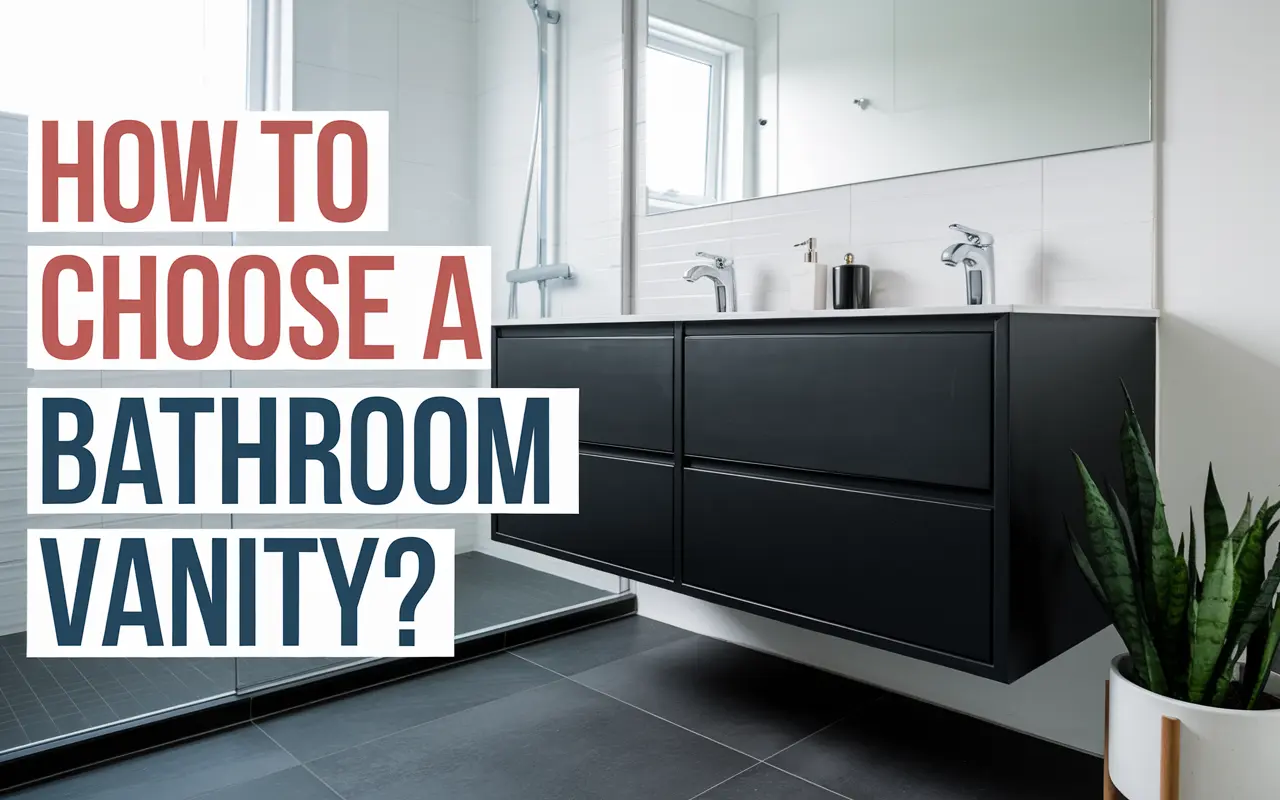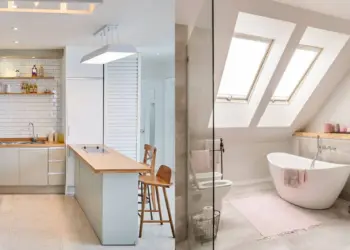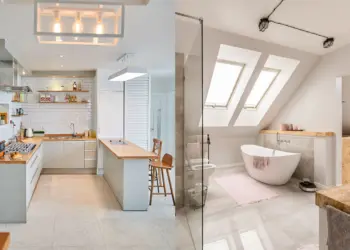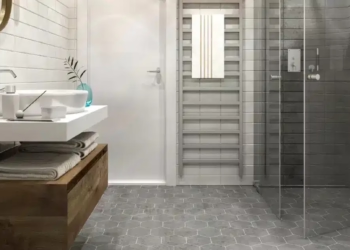So, you’ve decided it’s time to update your bathroom. Maybe your old vanity’s seen better days, or maybe you’re just craving a fresh, new look. Whatever the reason, choosing a bathroom vanity can be a tricky decision. It’s not just about picking something that looks good-it has to fit the space, match the rest of your bathroom, and most importantly, serve your needs.
Don’t worry, though! In this How to Choose a Bathroom Vanity: Your Complete Guide (Step-by-Step), we’ll walk you through everything you need to know to pick out the perfect vanity for your bathroom. Whether you’re looking for something sleek and modern or classic and traditional, you’ll find all the tips, tricks, and expert advice right here.
Table of Contents
Step 1: Understanding Your Bathroom’s Needs
Before diving into design, it’s important to know what your bathroom actually needs. After all, a vanity should serve both functional and aesthetic purposes. Here’s how to think about it:
What Size Do You Need?
The size of your vanity will largely depend on the size of your bathroom and how much storage space you need. The last thing you want is a vanity that overwhelms your space or, worse, one that’s too small to hold all your essentials.
- Small bathrooms: Opt for a single-sink vanity, which is more compact and perfect for tight spaces.
- Medium to large bathrooms: If you’ve got the room, you can go for a double-sink vanity, which offers a lot of counter space and storage.
- Half bathrooms: For these smaller spaces, a pedestal sink or a floating vanity might be a good choice to save room while still giving you a sleek look.
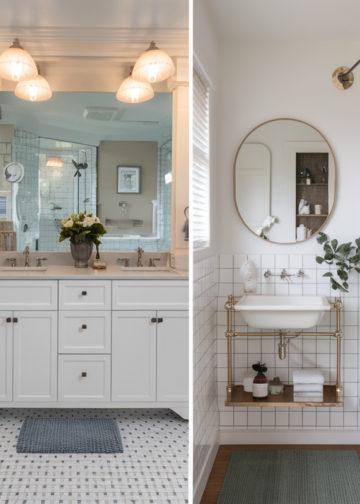
Think About Storage
Vanities aren’t just about looks-they should also offer storage for your toiletries, towels, cleaning supplies, and more. Before you start shopping, take stock of what you need to store. Do you need a lot of drawers for makeup and toiletries? Or would shelves work better for towels?
- Drawers: Great for keeping things organized, especially for smaller items like makeup or brushes.
- Cabinets: Perfect for bigger storage, like extra toilet paper, cleaning products, or even a laundry basket.
- Open shelves: If you prefer a minimalist look and easy access to things, open shelving might be the way to go.
- Customization Options: A custom vanity can be designed to incorporate specific storage features tailored to your preferences. Built-in dividers, pull-out shelves, or custom cabinetry can make a significant difference in how functional your vanity is.
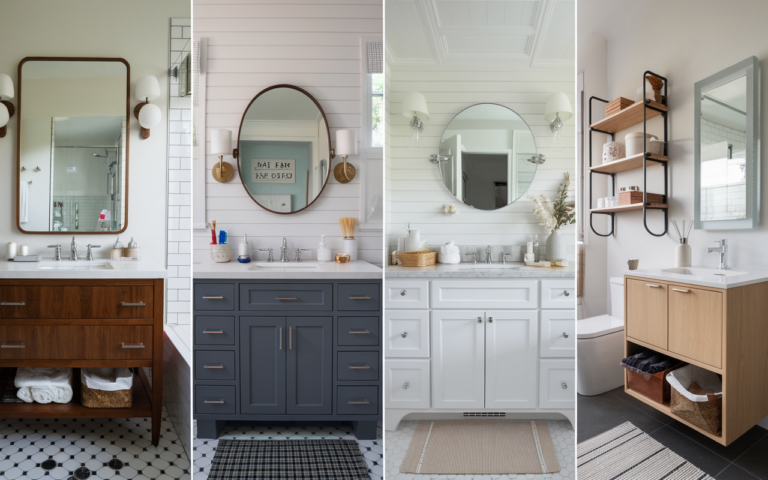
Step 2: Custom vs. Prefabricated Vanities: What’s Right for You?
When selecting a vanity, you’ll need to decide whether to go with a custom or prefabricated option. Both have advantages and disadvantages, depending on your budget and needs.
- Custom Vanities: These offer maximum flexibility in design, allowing you to select every aspect of the vanity, including the style, materials, and configuration. However, custom vanities tend to be more expensive and take longer to produce.
- Prefabricated Vanities: These are pre-made and available in standard sizes. They are more affordable and arrive faster than custom options, but they offer fewer choices in terms of customization. They are best for those on a budget or working with standard bathroom sizes.
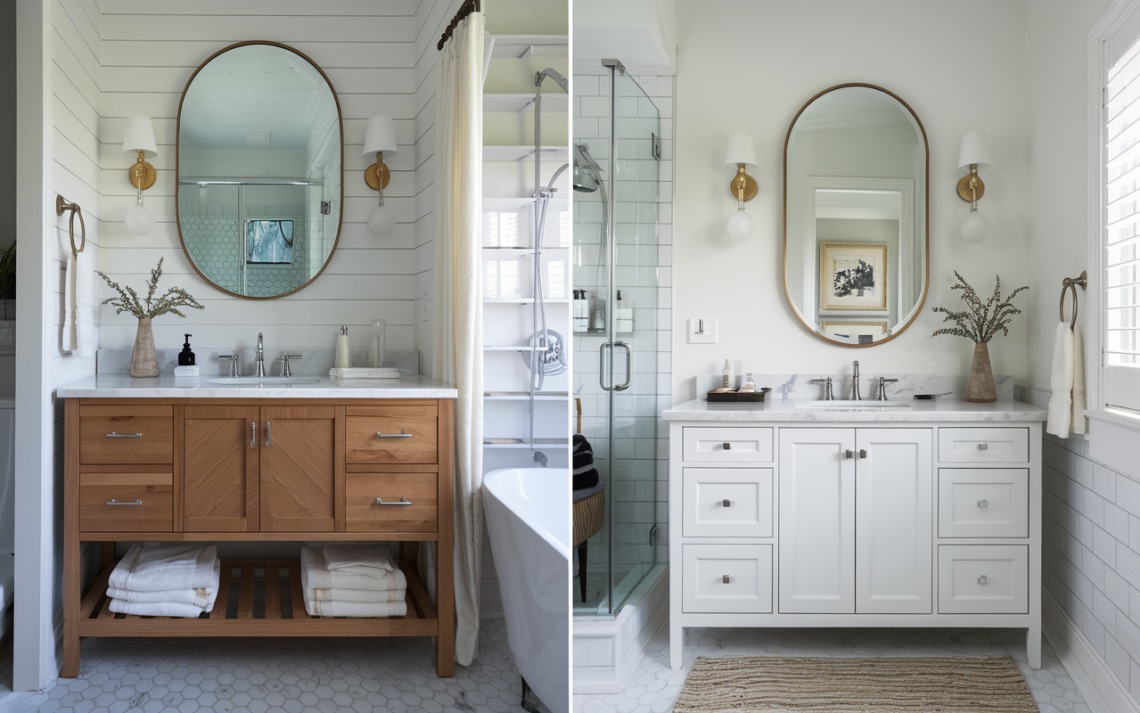
Step 3: Choosing the Right Style
Now comes the fun part-picking the style of your vanity. This will set the tone for the entire bathroom, so it’s important to consider how it’ll mesh with the rest of your design.
Consider Your Bathroom’s Overall Aesthetic
If your bathroom already has a defined style, make sure your vanity complements it. For example:
- Modern and sleek: Choose clean lines, glossy finishes, and minimalistic designs. Think floating vanities or those with metal legs for that ultra-contemporary vibe.
- Rustic and cozy: Go for vanities made of natural wood or distressed finishes for a warm, country feel.
- Traditional: Opt for classic, well-crafted vanities with decorative details like carved legs or mirrored panels.
- Transitional: A blend of traditional and modern design, offering a balanced, timeless look.
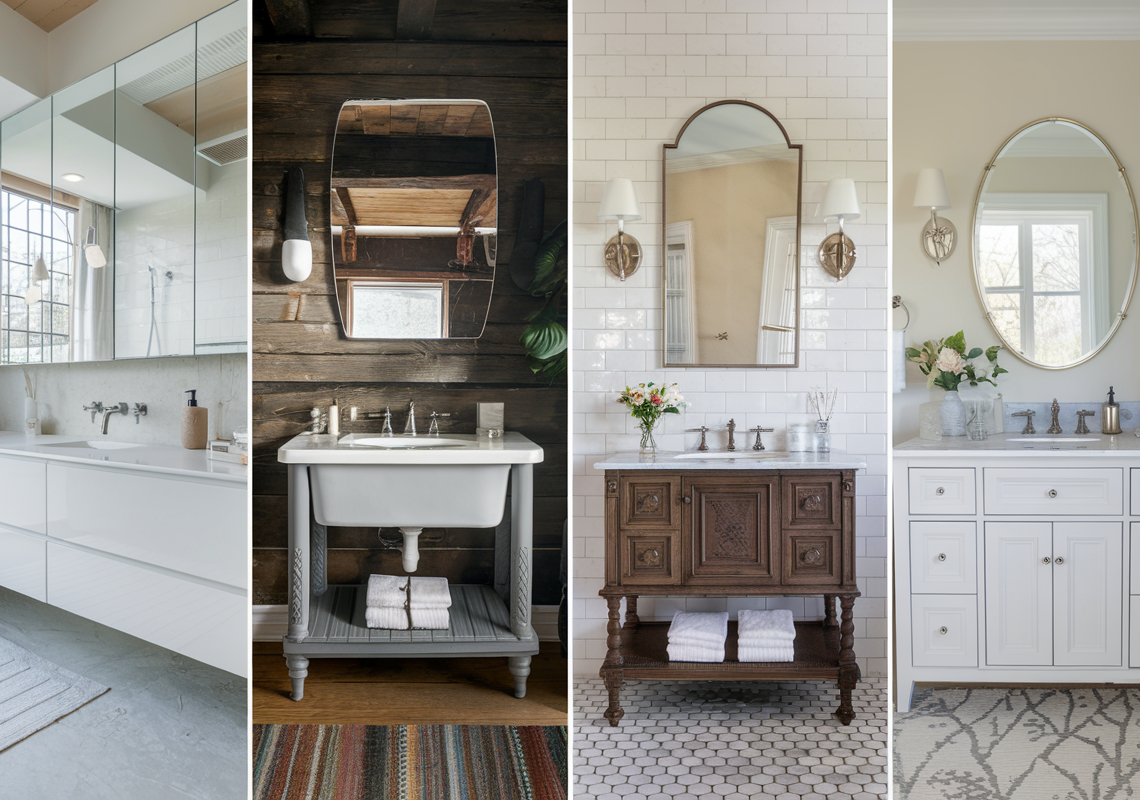
Pick Your Materials Wisely
Bathroom vanities come in a variety of materials. Choose something that suits your style and can withstand the moisture and wear of a bathroom:
- Wood: Offers a warm, natural look but make sure it’s properly sealed to avoid water damage.
- Metal: Stainless steel or brass vanities can add a sleek, industrial touch to modern spaces.
- Thermofoil: This durable, moisture-resistant material offers a sleek, modern appearance. It’s also easy to clean, making it an excellent choice for busy bathrooms.
- Stone: Granite or marble countertops are great for adding luxury and elegance.
- Acrylic/Composite: These materials are durable, easy to maintain, and often come in a variety of colors.
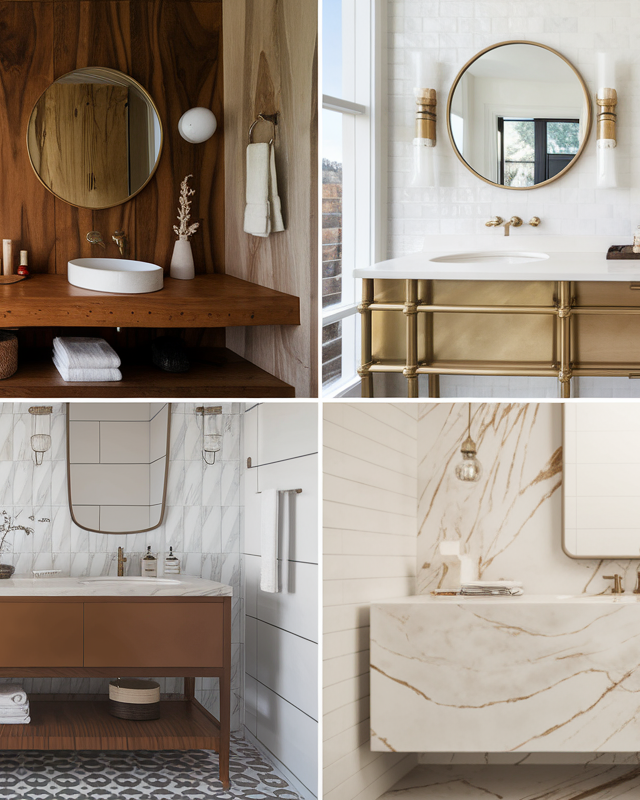
Step 4: Sink and Countertop Options
The sink and countertop are two of the most functional elements of your bathroom vanity, so you’ll want to make sure you pick the right ones.
Choosing the Sink Type
There are several sink styles to choose from, each with their own pros and cons:
- Undermount: Installed under the countertop, these sinks offer a clean, seamless look and are easy to clean.
- Vessel: These sit on top of the counter and create a striking visual effect. They’re a great option for modern or contemporary designs.
- Drop-in: A classic option where the sink is dropped into a hole in the countertop. Easy to install and clean, but may lack the modern appeal of undermount sinks.
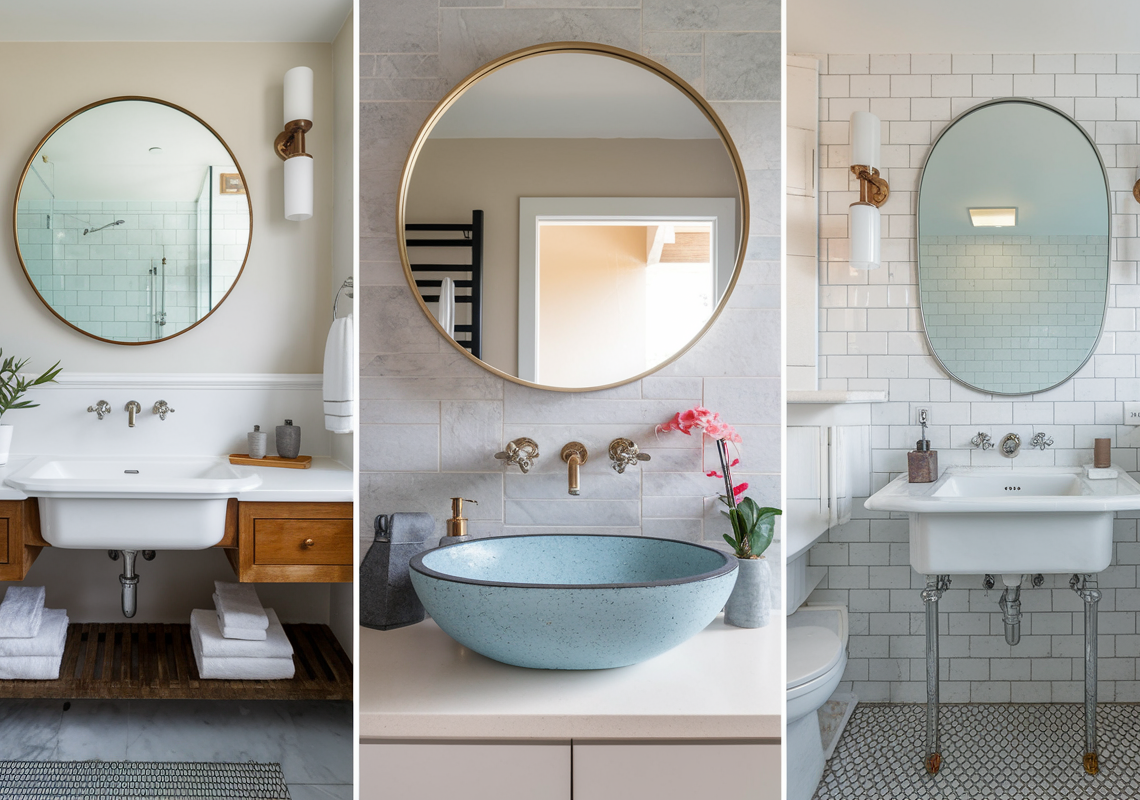
Bathroom Countertop Materials
- Quartz: Non-porous, durable, and available in tons of colors and patterns. Great for low-maintenance, long-lasting beauty.
- Granite: Known for its elegance and durability, though it requires some maintenance to keep it sealed.
- Marble: Luxurious but requires regular sealing and care. Great for adding a timeless, elegant touch.
- Laminate: Budget-friendly and available in many designs, though not as durable as stone.
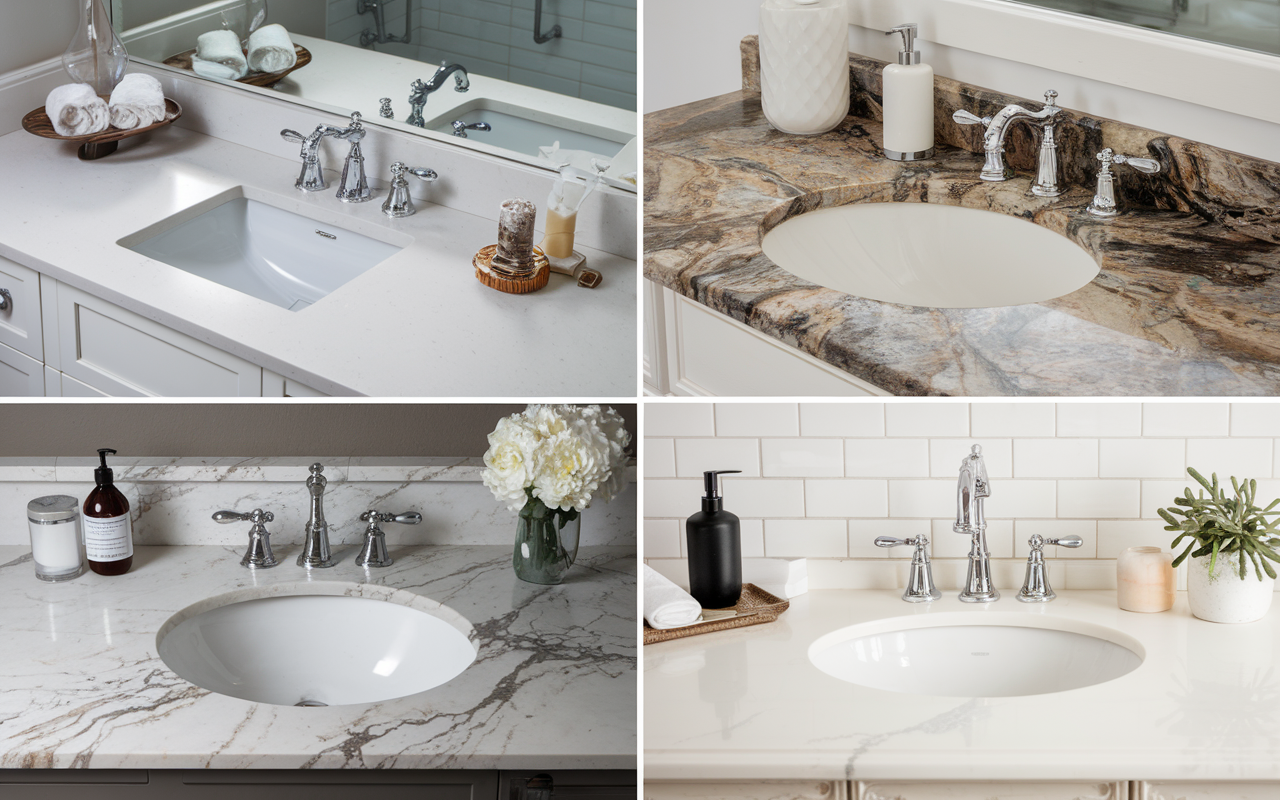
Key Consideration: Sink Size vs. Counter Space
When selecting a sink, balance its size with your desired counter space. Larger sinks can be cumbersome in a small vanity, so opt for a more compact option if you’re trying to preserve surface area.
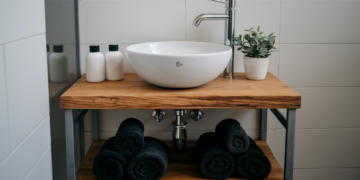
Step 5: Assess the Space: Placement and Size Considerations
The size and placement of your bathroom vanity are determined by the layout of your bathroom. You must take into account existing features like doors, windows, and plumbing. Here are some key considerations to ensure optimal placement:
- Plumbing Location: The location of your plumbing fixtures plays a major role in determining where your vanity can be installed. Altering plumbing can add significant costs to your renovation project. Therefore, if you’re working with existing plumbing, select a vanity style that aligns with your current layout. For instance, wall-mounted vanities may require relocating the plumbing, while floor-mounted models work with standard plumbing setups.
- Bathroom Flow and Door Swing: Before committing to a specific placement, ensure that the vanity won’t obstruct door swings, shower doors, or traffic flow. A vanity that blocks the bathroom door or prevents easy movement can quickly become a source of frustration.
- Space Dimensions: Carefully measure the available space for the vanity. The size of the vanity should complement the overall proportions of your bathroom. Vanities typically come in widths ranging from 24 inches to 60 inches, with depth measurements between 17 inches and 24 inches. Consider your bathroom’s overall design, layout, and flow when deciding on the size.
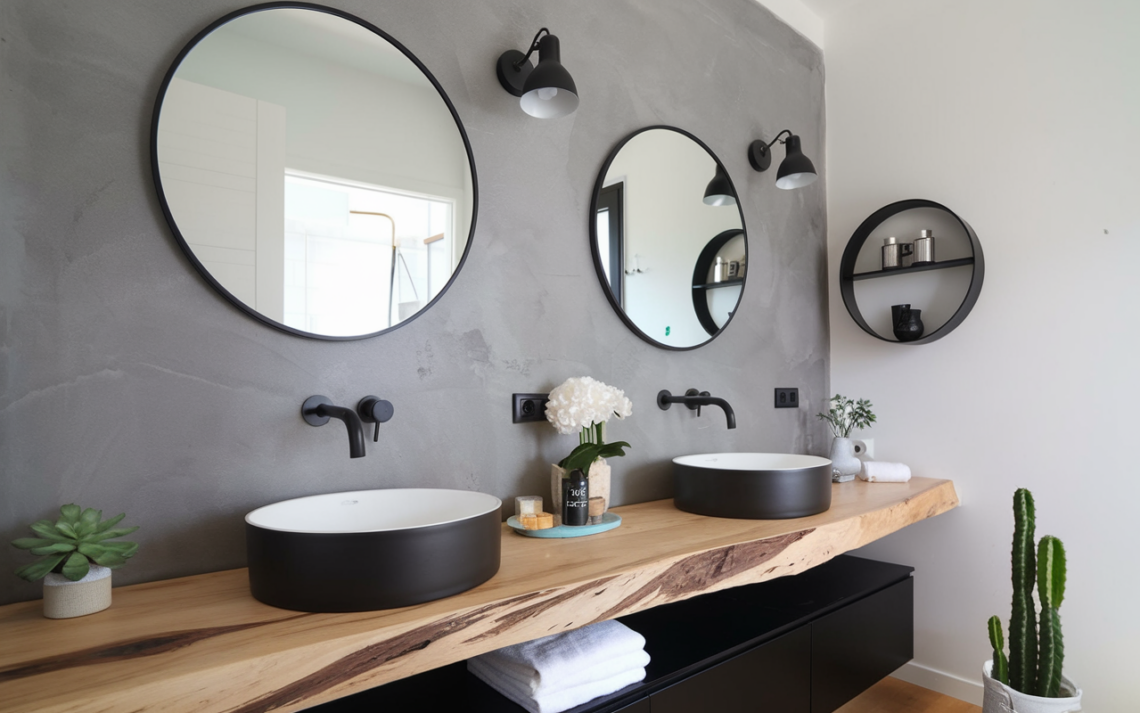
Step 6: Budgeting for Your Vanity
Bathroom vanities come in a range of prices, depending on materials, size, and brand. Here’s a rough guide to help you set your budget:
- Entry-level: For smaller, basic vanities, you can expect to pay between $150 to $500.
- Mid-range: Mid-range vanities with additional features (like better materials, more storage, or high-end finishes) typically cost $500 to $1,500.
- Luxury: Custom or high-end vanities with premium materials, custom finishes, and advanced features can go for $2,000 or more.
Don’t forget to factor in installation costs if you plan on hiring a professional.
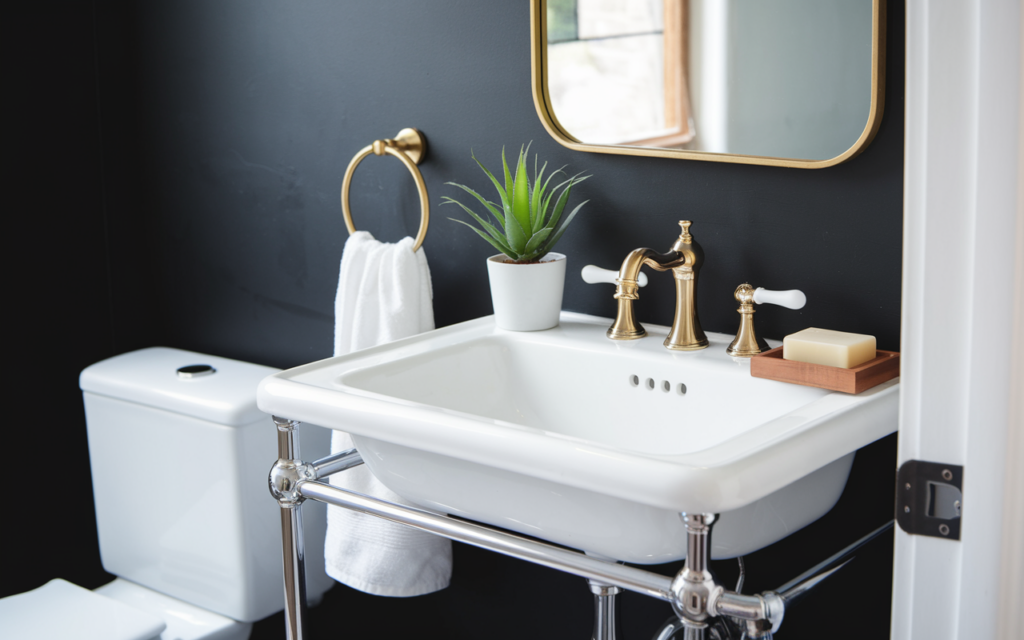
Step 7: Installation and Maintenance Tips
Once you’ve found the perfect vanity, it’s time for installation. If you’re a DIY enthusiast, you might feel confident installing it yourself, but if not, hiring a professional might be the way to go. Here are a few tips for both options:
DIY Installation
- Use a level: Ensure your vanity is perfectly level before securing it to the wall.
- Seal the countertop: If you’ve chosen a natural stone countertop, make sure to seal it to prevent stains.
- Secure plumbing: Double-check that your plumbing connections are tight to avoid leaks.
Professional Installation
- Check reviews: Before hiring someone, check their reviews and past work to ensure they’re qualified.
- Confirm costs upfront: Get a written estimate for both the cost of labor and any materials that might need to be purchased.
Maintenance
- Clean regularly: Wipe down your vanity with a mild cleaner and a soft cloth to keep it looking fresh.
- Reseal countertops: If you’ve chosen a stone countertop, be sure to reseal it every few months to protect it from stains.
- Avoid harsh chemicals: Harsh cleaning products can damage the finish, so stick with gentle cleaners.
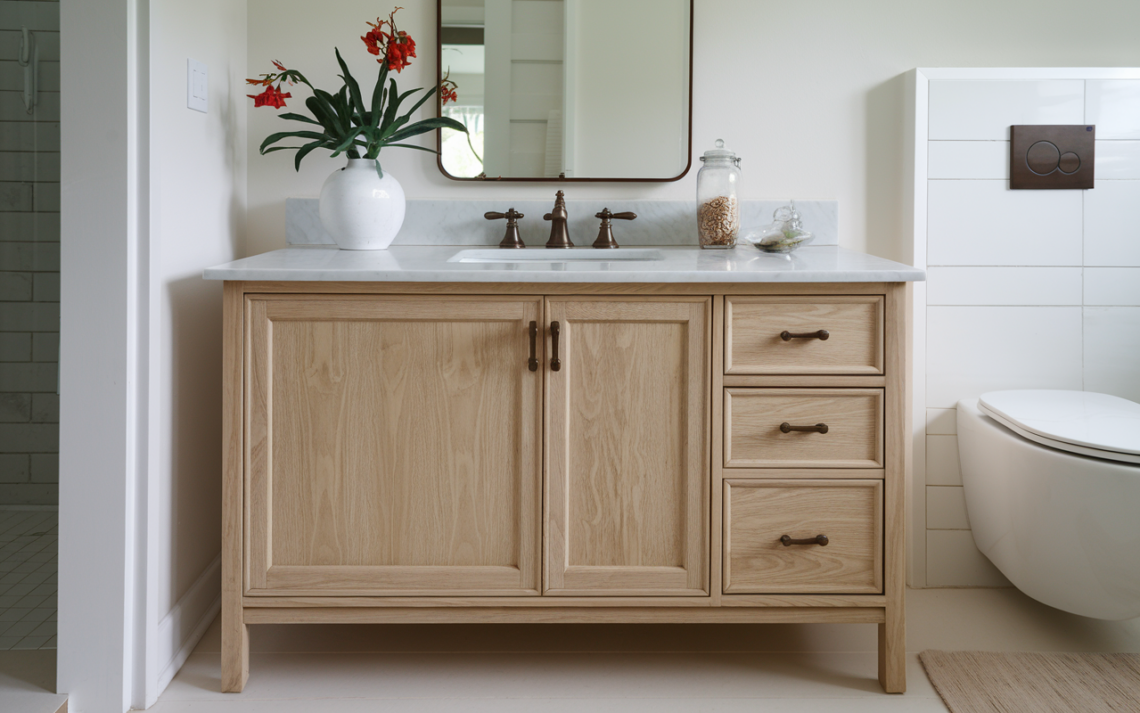
Choosing a bathroom vanity doesn’t have to be overwhelming! By following this How to Choose a Bathroom Vanity: Your Complete Guide (Step-by-Step), you’ll be able to select a vanity that fits your space, matches your style, and meets your practical needs. Remember to consider size, style, material, and storage, and don’t forget to measure twice to avoid costly mistakes!
So go ahead, find that perfect vanity, and transform your bathroom into a stylish, functional space that you’ll love for years to come.
FAQs
How Do I Know What Size Vanity to Choose?
The size of your bathroom determines what size vanity will fit best. Measure the space where the vanity will go, leaving some room around the edges for easy movement. Make sure to take into account the size of the sink and countertop you want as well.
What’s the difference between a vessel sink and an undermount sink?
A vessel sink sits on top of the countertop, offering a bold look, while an undermount sink is installed beneath the countertop for a clean, seamless finish.
What’s the Difference Between a Floating and Traditional Vanity?
A floating vanity is mounted to the wall, creating a modern, streamlined look. It can make the room feel more spacious, as the floor area remains open. A traditional vanity sits on the floor and offers more storage space. Both have their benefits, so it’s up to you to decide which fits your style and needs better.
Can I install a bathroom vanity myself?
If you’re handy with tools, installing a bathroom vanity yourself is definitely possible. However, it’s important to remember that proper plumbing and installation are key. If you’re unsure, it’s best to hire a professional to ensure everything is set up correctly.
